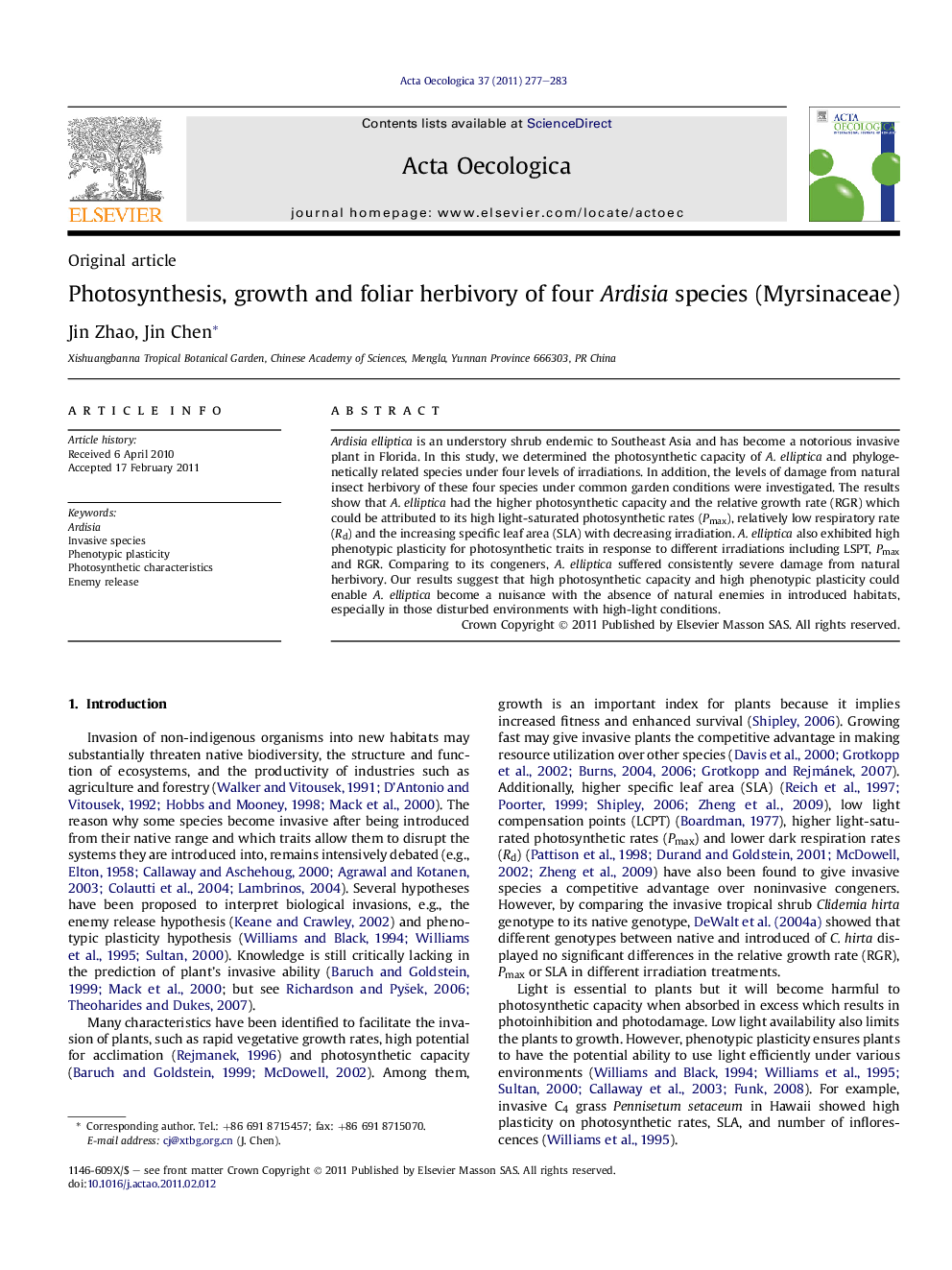| Article ID | Journal | Published Year | Pages | File Type |
|---|---|---|---|---|
| 4380923 | Acta Oecologica | 2011 | 7 Pages |
Abstract
Ardisia elliptica is an understory shrub endemic to Southeast Asia and has become a notorious invasive plant in Florida. In this study, we determined the photosynthetic capacity of A. elliptica and phylogenetically related species under four levels of irradiations. In addition, the levels of damage from natural insect herbivory of these four species under common garden conditions were investigated. The results show that A. elliptica had the higher photosynthetic capacity and the relative growth rate (RGR) which could be attributed to its high light-saturated photosynthetic rates (Pmax), relatively low respiratory rate (Rd) and the increasing specific leaf area (SLA) with decreasing irradiation. A. elliptica also exhibited high phenotypic plasticity for photosynthetic traits in response to different irradiations including LSPT, Pmax and RGR. Comparing to its congeners, A. elliptica suffered consistently severe damage from natural herbivory. Our results suggest that high photosynthetic capacity and high phenotypic plasticity could enable A. elliptica become a nuisance with the absence of natural enemies in introduced habitats, especially in those disturbed environments with high-light conditions.
Related Topics
Life Sciences
Agricultural and Biological Sciences
Ecology, Evolution, Behavior and Systematics
Authors
Jin Zhao, Jin Chen,
